HAENA — The water is crystal clear and turtles troll the reef at Ke‘e Beach, beyond the Kuhio Highway roadblock on Kauai’s North Shore.
Limu decorates rocks at the water’s edge with its long, green tendrils and opihi clinging to boulders waiting for the rising tide. The white stretch of sand that’s known for epic sunsets and sweet swimming is nearly empty. Only an occasional runner or local beachgoer leaves footprints in the sand.
And just as workers arrived at the lifeguard stand to start their day working on a historic cabin tucked beside the Kalalau Trail, Avemaria Goodwin arrived to take advantage of an empty lagoon.
“I usually try to get her earlier before the workers get here,” Goodwin said, swimming playful circles in the morning sun. “But this morning it was raining, so I stayed inside a little longer.”
A 30-year Wainiha resident, Goodwin has seen her share of change on the North Shore, but said since Kuhio Highway closed, things have been different.
“It’s all bouncing back,” she said. “I swim with turtles and seals, the reef is coming back.”
Betsy and Steve Rigotti, who also live just up the road from Ke’e Beach, said they’ve noticed a major change in the area’s ecosystem as well.
“The local fishermen are very happy,” Betsy Rigotti said. “I’ve seen more fins in the water.”
Both Rigotti and Goodwin pointed out they’ve seen a marked decrease in plastics and trash on the beach, as well.
And change has extended further into the valley, beyond the reefs that are blossoming and the marine life that’s frequenting the beach for a sunny snooze.
The very fabric of the Wainiha area has reverted back to a different time, a more rural time. Neighbors stop by more often to visit and check in with each other, dogs play in the street, people wave to each other as they pass by and cars stop mid-journey to talk story.
And in the midst of the rural life, the dump is still full of mud-soaked debris leftover from the floods that closed the road and wreaked havoc in 2018. Homes are still battling mold and needing repairs. Lines of derelict vehicles dot the roads, trees growing out of doors and windows – signs they haven’t been touched in a while.
“It’s an area in recovery and people with tons of damage,” said Rigotti, whose house was one of the few spared in the flood.
While they’re still trying to recover from the life-changing weather that rocked Kauai in 2018, the road is getting ready to reopen. And people wonder, what’s going to happen to the barely budding ecosystem and rural lifestyle when it does.
“They should do an environmental impact statement, see how usage is impacting this place,” Rigotti said.
Both she and Goodwin specifically pointed out the sheer amount of sunscreen that’s saturated the marine environment of Ke’e Beach, Makua Beach and the surrounding areas.
Both voiced concern and hopes that when people are allowed to once again visit the areas beyond the roadblock, they’ll be mindful of sunscreen’s impact on the environment and bring with them the brands that are reef safe and oxybenzone free.
“I worry about when people come back with their sunscreen, especially the kind they’re spraying all over the place,” Goodwin said.
As the sun made its trek toward midday, Goodwin headed back home to continue her day and a few Princeville residents showed up at Ke’e Beach, taking advantage of a few hours in between their work cleaning houses.
“It’s like it’s a different dimension,” Janet Carafa said as she stretched her arms out to soak in the sun. “We’re beyond paradise.”
••• Jessica Else, environment reporter, can be reached at 245-0452 or at jelse@thegardenisland.com
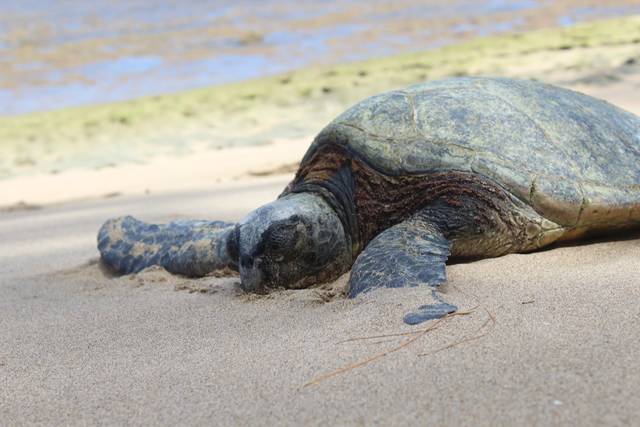

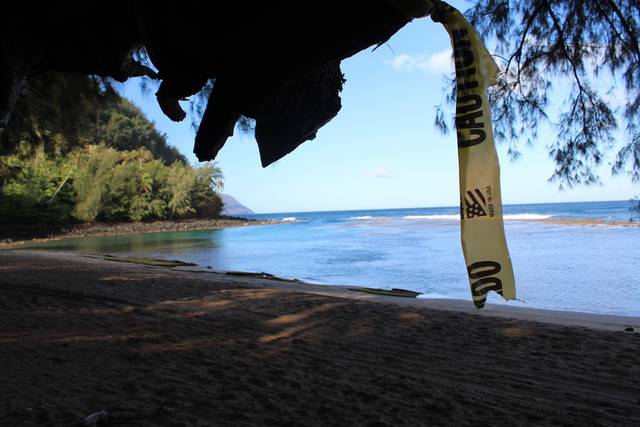
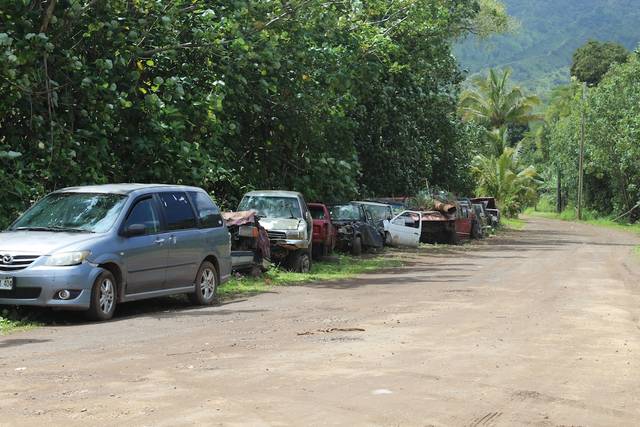
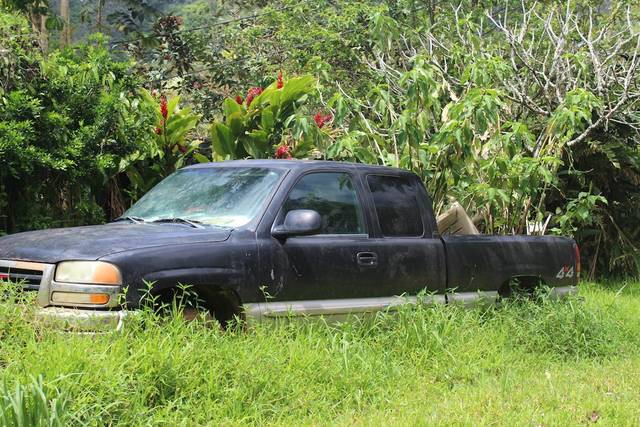
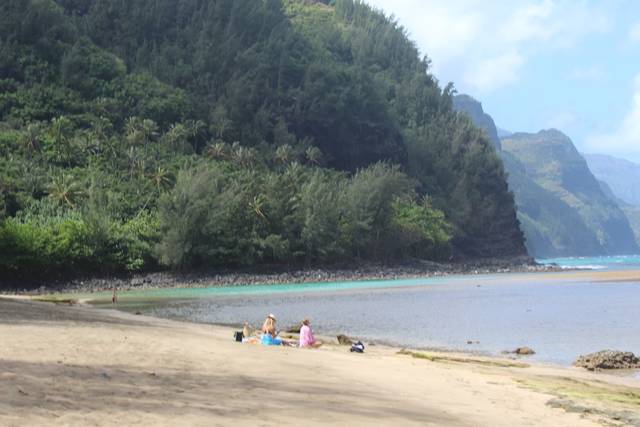
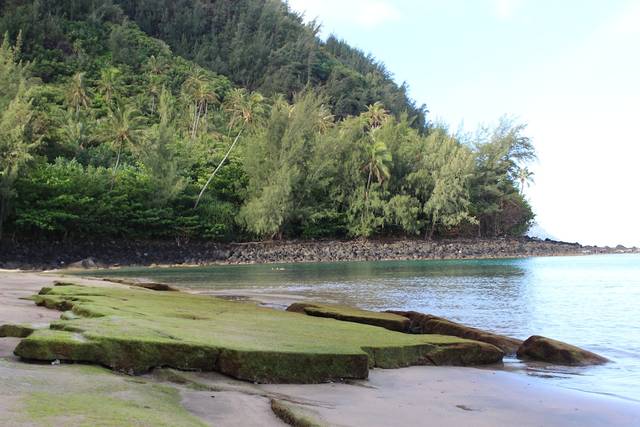
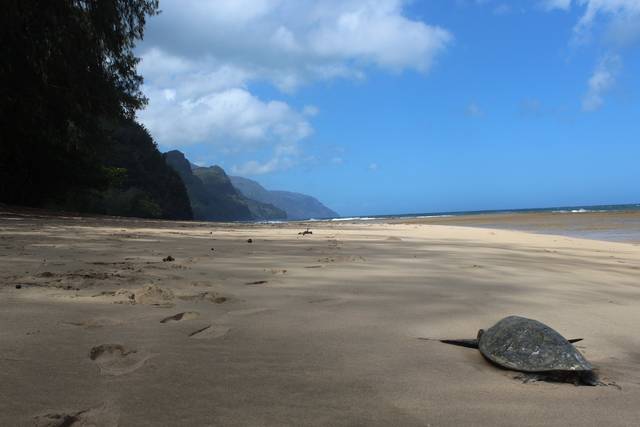
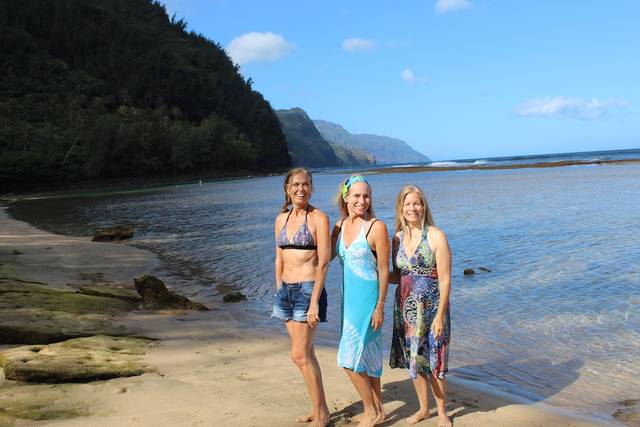
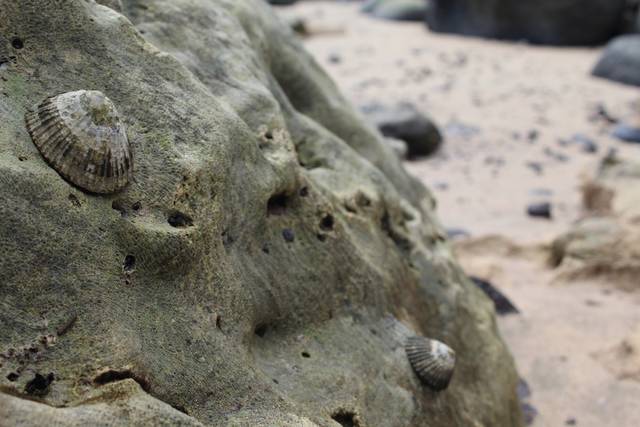
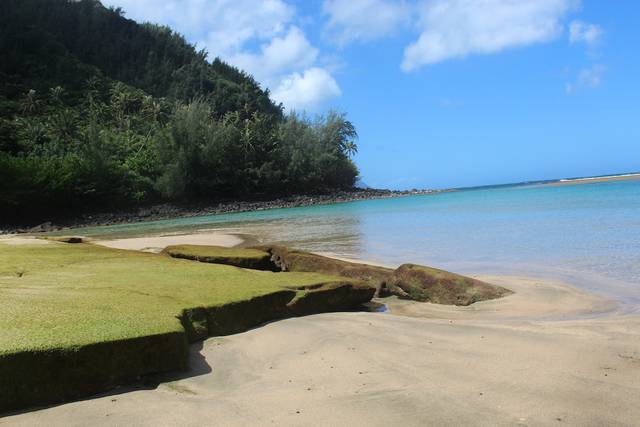











Toads in da road still want their gated community and everyone else to pay for it?
Aloha Kakou,
As it seems to be today, and as it was in the eons ago, and same in ‘65, Kee Lagoon is at the Beginning of Time.
Charles
This “article” is so full of anecdotes and has no basis in fact. Has there been a scientific survey taken of Haena and Wainiha beaches coral growth rates before and after the road closure? Has any of the “experts” that continually post articles about the health of North Shore reefs in the Garden Island newspaper, ever taken taken an alkalinity test, phosphorus test, or temperature test on the North Shore? I have. The reefs on the North Shore are not blossoming and are not coming back any time soon. There is hair algae, dinoflagellates and sediments covering the reef on the North Shore. The montiporas are being attacked by black band and white band disease, every acropora is dead or has dead spots on them, coralline algae is bleaching. This is because there is too much nitrogen and phosphorus entering the water. This is because all of you people living on the North Shore are using cesspools and drain fields on your property to dispose of your excrement and urine. Your excrement and urine flows from your drain field into the water table, and then into the ocean. You know those piles of foam you see on Anini Beach where the stream flows into the sea? That is organic waste, put into the environment by North Shore residents. As long as there is no sewage treatment plant on the island, the reefs will never come back. North Shore residents are more responsible for the degradation of the reefs than any other entity. That is a fact, no amount of North Shore resident whining about tourists will bring the reefs back, only ridding the environment of nitrogenous waste will do this. You can scapegoat the tourists for all of the North Shore’s problems, but they are only there temporarily, you North Shore residents are there year round and are the source of the majority of the problems.
woopty doo for you
IF THEY REALLY CARED THEYD ALL MOVE OUT OF NORTH SHORE AND DONATE THEIR LAND TO STATE PARK…
Here we go again, TGI printing hear-say as factual statements. Most TGI articles should actually be categorized under “opinion” …